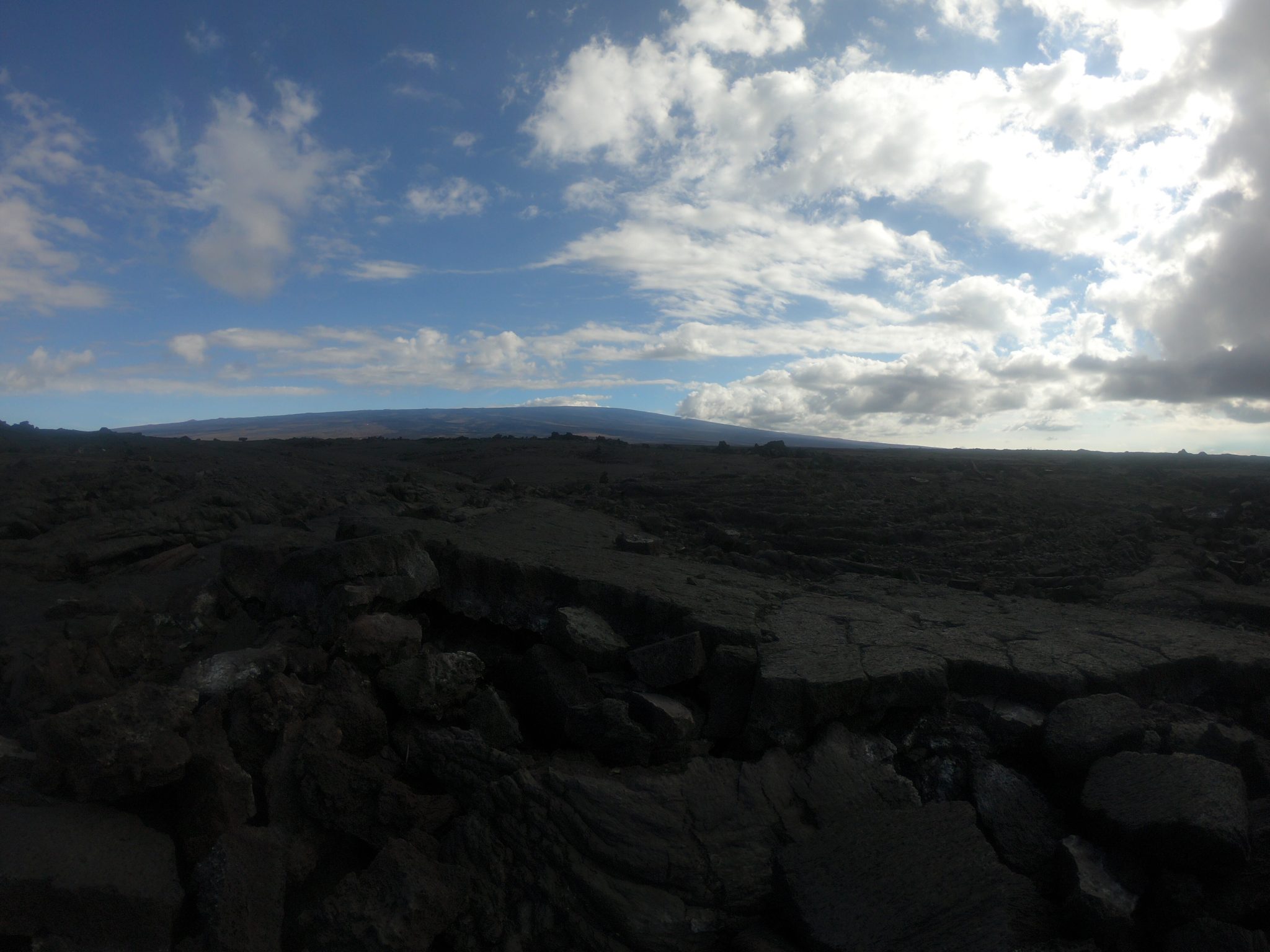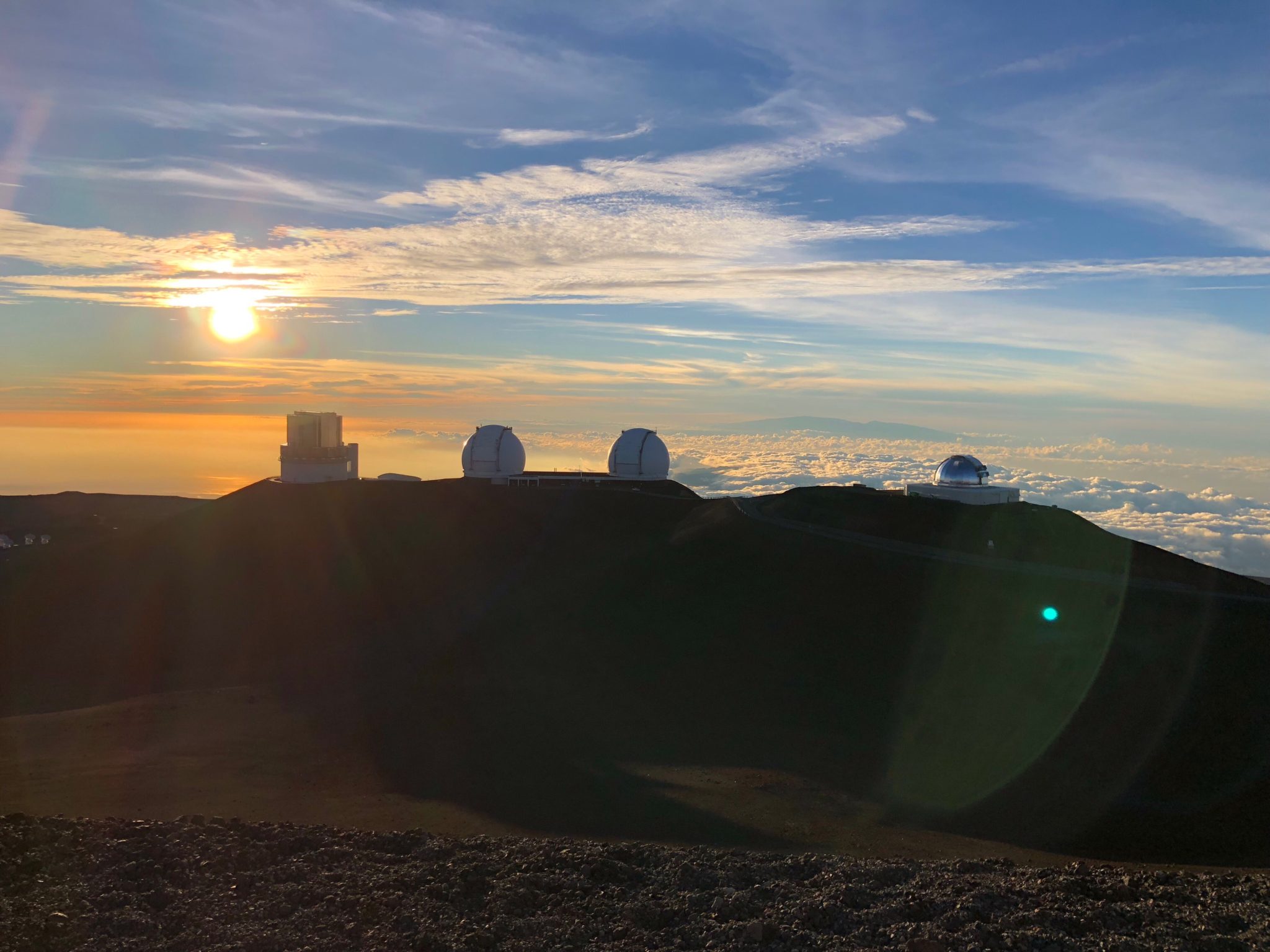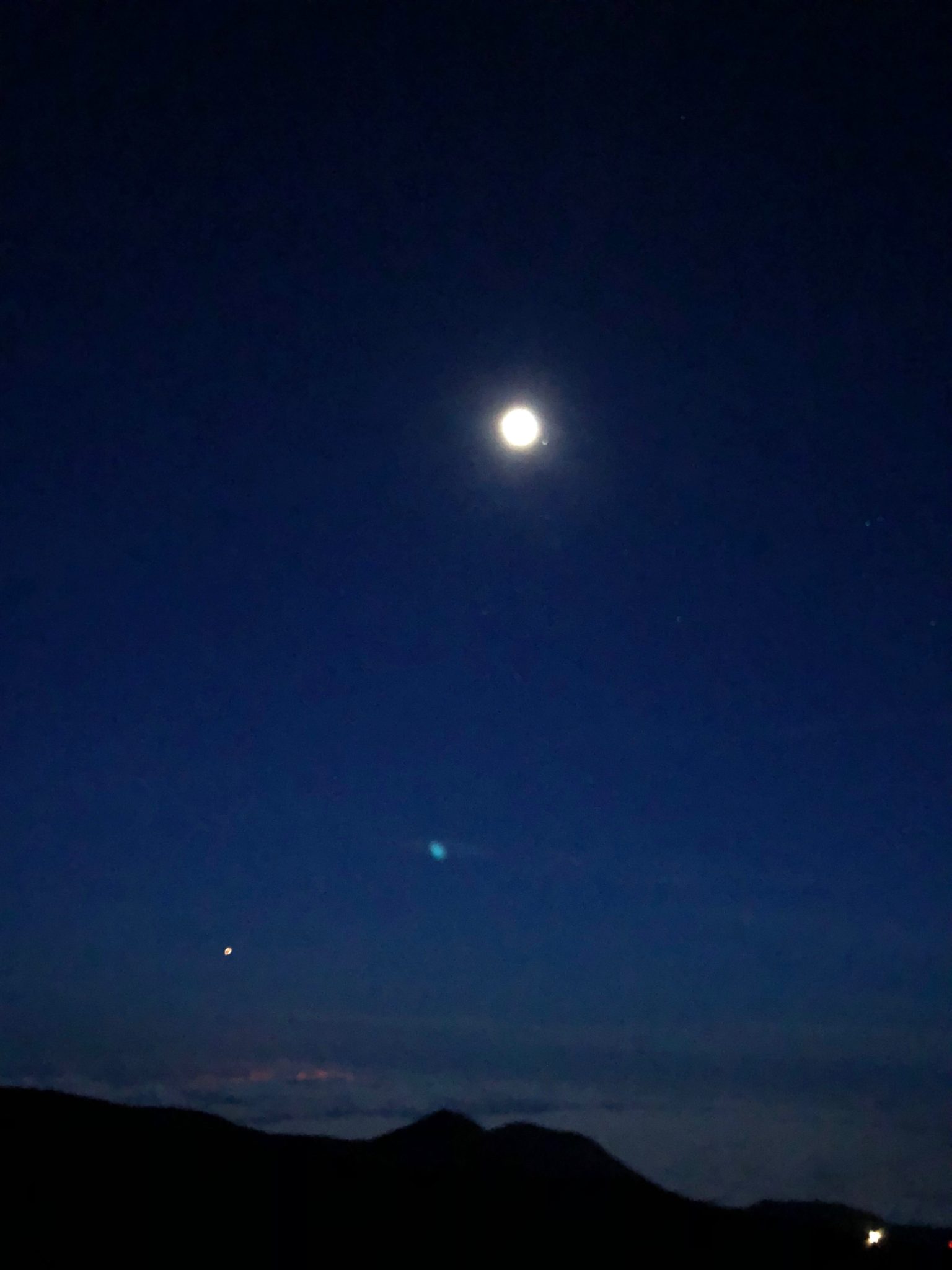Yesterday we traversed 14,000 feet high to the top of Mauna Kea. We didn’t hike the volcano like the original settlers, however I still felt the effects of the high altitude on my body. We started our journey in Kona where the van picked us up. Jeff, our driver and teacher, educated us about the origins of the islands and many other interesting facts about the volcanoes on the Big Island.
Hot Spot theory was one of the ways Jeff explained the origin of the Hawaiian Islands. Hot Spot theory is the idea that there is a plume of magma underneath the Earth’s crust which has stayed in place for a long period of time. This “Hot Spot” causes lava to spew, creating an underwater mount as the lava excretes from the crust and cools on top of itself. This lava eventually breaks the water and becomes an island as it continues to erupt lava and grow. This process continues as the pacific plate moves southwest on the globe. This causes the islands to “travel” northeast making new islands form wherever the “Hot Spot” is on the plate. The Big Island of Hawaii is the youngest of the islands and is the biggest because, as time passes, the older islands erode and also move into the earth’s crust.
As we made our way further up the mountain, Jeff informed us that we were driving up what is thought to still be an active volcano. He spoke of how Mauna Kea, historically, has erupted every 200 years or so. This is specifically pertinent information because, the last eruption of Mauna Kea was in the 1800s and over 200 years ago. We made a stop around 8,000-9,000 feet up the mountain to view some of the lava flow from the last eruption. The lava was a smooth rock rather than the jagged rock lava found around the island called a’a lava. This smooth lava is called pahoehoe and is formed when the lava maintains a liquid form as it cools slowly at a more consistent temperature than a’a.

Driving further up the mountain, it became harder to breathe. It got much colder as Jeff drove us up past the 12,000 meter marker. My phone read that it was 33°F so my three layers of clothing helped tremendously when we finally made it to the top. 14,000 feet high! I became very drowsy and lightheaded as I got out of the van. Jeff called this the two Mai Tai effect. Even though I was lightheaded and a little disoriented, I was still able to take in the immense beauty of the views from the top of the mountain. At the moment I saw the brilliance of the sun shining through the thin wisps in the sky I was stunned. I knew why the original Hawaiians called this mountain the bridge between the earth and the heavens.

Finally, we ended the night on an extremely high note… with some hot chocolate, brownies, and stargazing. Using a very powerful telescope, I was able to view planets and stars that are light years away. Even without the telescope, the night sky was so clear that I could view constellations and planets that I would ever see in the suburban skies of Texas. I will never forget the beauty of that night, especially since I have so many beautiful photos to maintain the memory.





